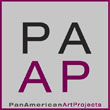« Reviews
Manuela Ribadeneira - Change is Around the Corner

Manuela Ribadeneira. Cortes y Recortes, 2009, PVC, mirror and glass paint, 9.4”x4.3”x3.14”, Ed.3+AP.
dpm Gallery - Miami
By Rodolfo Kronfle-Chambers
Twenty years after the fall of the Berlin Wall -and of the panorama outlined by Francis Fukuyama before the horizon of a unipolar world- the “end of history” is reconfigured in different parts of the world in a reloaded version of the old clash of ideologies contradicting -at least for the moment- the expansion of western-style liberal democracy. Before this scenario and considering that for decades more than one generation of artists has been using deconstructive strategies like a demolition ball to pulverize the great narratives that sustain the world, the question to ask would be: What means of confrontation is still available to art to allude to sociopolitical reality in ways that have not been eroded?
A clear answer can be found in Manuela Ribadeneira’s recent show. Her new production lends an attentive ear to the ideological rumblings that penetrate the worldwide geopolitical chess game, and that present themselves with particular intensity and folkloric nuances in Latin America. As the artist observes, “[We are invaded by] the clear sensation that something has come or is coming to an end, a change in the rules of the game in which the new rules are not yet at all clear. We live in an era in which on all sides one hears: change and revolution, surely the two most used words in recent times.”
Her reflections are presented in this collection of works (all from 2009), informed by a series of allusions to short anecdotes about the French Revolution. In each piece tales and circumstantial events ascribed to that historic milestone are sublimated and invoked with a double meaning that calls forth echoes and perceptible resonances in today’s social processes. For example: It is little known that those who awaited their turn at the guillotine practiced a kind of enactment of the moments before death, even reaching the extreme of pricking their own throats with red thread to get used to what was coming. That information illuminates the piece Cortes y Recortes (Cutting and Trimming) consisting of a hand mirror on whose surface there is a horizontal blood-colored smear, which appears drawn like a cut on the neck when we view our reflection in it. In dialogue with that work is The Rehearsal, a video that shows the profile of a motionless face, suspended face down on the upper edge of the projection and which suddenly plunges after two minutes of suspense. Para perder la cabeza por Danton (To Lose One’s Head by Danton) emulates -in a padded display covered in crimson leather- the shape of an old timber structure used to hold those who would be decapitated. This piece was “lined and fabricated by a descendant of Danton, whose wife fled to London in the aftermath of the Revolution.”

Manuela Ribadeneira, Change is around the corner (detail), 2009, Stain steel and rubber, 15 panels 4.3”x4.3”X 0.15”, Ed3+AP.
Historic research has become a key methodology in Ribadeneira’s work in recent years; but what is worthy of note -what differentiates her practice from that of other artists- is that her inquiries always make a point of reviving relatively minor accounts, incidental details left by the wayside in the summary narratives on which history is built. The value of these small, curious details is that paradoxically they contain an incisive and astutely insidious capacity to engender feelings, besides which -as the artist notes- “they have an important quality, since they function alone and independently of the great narrative that supports them and as a result they function outside of the space and time to which they belong.”
What stands out in the show are the elegance and subtlety of the methods of representation utilized, which are contrasted, in an inversely proportionate relationship, with the complex hermeneutic potential activated in each piece: Las Tejedoras (The Knitters), a simple but very attractive sculpture, comprised of dozens of long, colored knitting needles arranged in a swirling fashion, refers to those people who crowded around witnessing the summary judgments of the Revolution and who bore the tedium of their role by knitting; most likely a metaphor as much about multitudes being manipulated to justify radical political ends, as about politics as a spectacle of the masses. Sobre la dirección en la que sopla el viento (The Way the Wind Blows), a delicate installation that shows seven goose feathers suspended over axes, which turn round before the slightest breeze, appears to point out the diversity of the political spectrum and the erratic orientation of our own compass in navigating the same. El Chivo Expiatorio, Rex solutus est a legibus (The Sacrificial Lamb, The king is released from the laws), a bronze seal with its corresponding leather case and an impression of the same in ceramics, reproduces an inscription in Latin that -in addition to being an enlightened reference to the homonymic painting of the Pre-Raphaelite, William Holman Hunt- expresses that the actions of the king are above the law, perhaps alluding to the curious return to arbitrariness and the abuse of power as specific signs of certain regimes.
The strange poetic dimension of these works resulting from the apparent absence of a defined discursiveness, which becomes as abstract as it is ominous, turns them into meditative objects on which each of us can subjectively render his/her own interpretation. Nevertheless, the tone of the collection would appear to enclose a sinister warning embodied in the piece that lends its name to the show: Change is around the corner, a folding sculpture of square, stainless steel plates that in its zigzagging form represents in a literal way the statement of its title, apparently producing a metaphor, with a certain degree of irony and humor, of the hackneyed but ubiquitous invocations of transformation in revolutionary political discourse. The oeuvre activates a game in which illusion becomes a mirage, placing itself in sync not with the Hegelian idea of the repetition of history but with Marx’s paraphrased idea which it expands, showing how these great events present themselves “first as a tragedy and then as a farce.”
(November 14, 2009 - January 30, 2010)
Rodolfo Kronfle-Chambers is an independent curator and art critic based in Ecuador.
Filed Under: Reviews


































